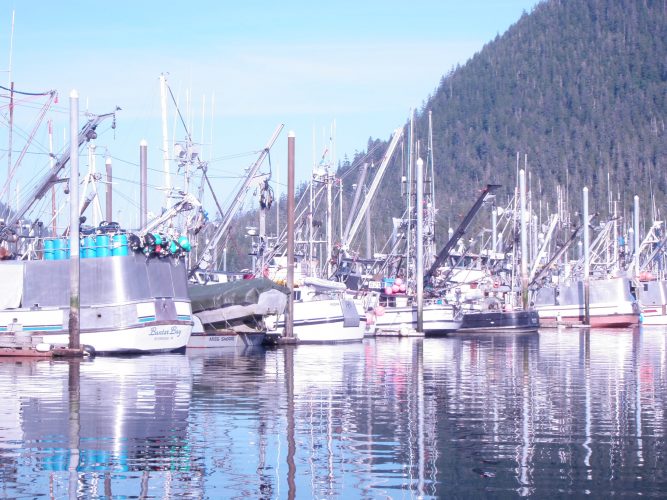
The National Marine Fisheries has published a final rule allowing use of electronic monitoring instead of an on-board human observer for smaller longline and pot gear fishing vessels. The final rule published Tuesday, August 8 allows vessels under 60 feet fishing for halibut and groundfish to volunteer for video camera monitoring for next year’s season.
Chris Rilling is the director of the fisheries monitoring and analysis division at the agency’s Alaska Fisheries Science Center in Seattle.
“Many of these vessels have had limitations in terms of space or life raft capacity for carrying an observer and so we’ve been working with these vessels to develop electronic monitoring alternatives to collect the data we need for management purposes,” Rilling explained this week.
A series of cameras is used to document fish species that are caught, kept or tossed back overboard. That information is used to manage fisheries. One camera also monitors compliance rules on discarding fish overboard along with seabird avoidance measures used on each boat.
The rule applies to part of the fleet that’s under partial coverage; not every boat is required to carry an observer. Instead observers have been placed on randomly selected boats. 90 vessels volunteered to be in the program this year, what’s called a “pre-implementation phase.” This final rule makes the voluntary video monitoring permanent and it takes effect September 7th. The deadline to apply to take part in electronic monitoring for next year is November 1st. All boats, even those already entered in this year’s phase have to re-apply by that date in order to take part next year.
Dan Falvey of the industry group Alaska Longline Fishermen’s Association thinks electronic monitoring (EM) in its first phase has been working well.
“We’ve been in pre-implementation for two years now and every year more boats indicate an interest in signing up,” Falvey said. “Mostly it’s just because they’re learning about EM systems and making a decision whether taking a camera and turning it on when selected is more compatible with their vessel operations than trying to take a human observer out.”
Falvey said the final rule is a long time coming. He credited Senator Lisa Murkowski for persuading the agency to consider the alternative type of monitoring and thanks the National Fish and Wildlife Foundation for grant funding to industry associations for the program.
Groundfish boats already pay a one and a quarter percent landing fee for the observer program. The federal agency this year and next is covering the cost of video monitoring. Starting in 2019, that money will pay for both human observers and electronic monitoring.
The agency expects coverage on around 30 percent of trips next year. That’s higher than the coverage rate for observers on those boats this year. Other fleets in Alaska are already using electronic monitoring mainly for compliance with fishing regulation and limits.
Boats eligible to apply for the electronic monitoring will be getting a letter from the federal agency. The online application system is not expected to be up and running until later this summer. Once it is functioning fishermen can apply here or contact a call center at 1-855-747-6377.
Joe Viechnicki is a reporter at KFSK in Petersburg.




